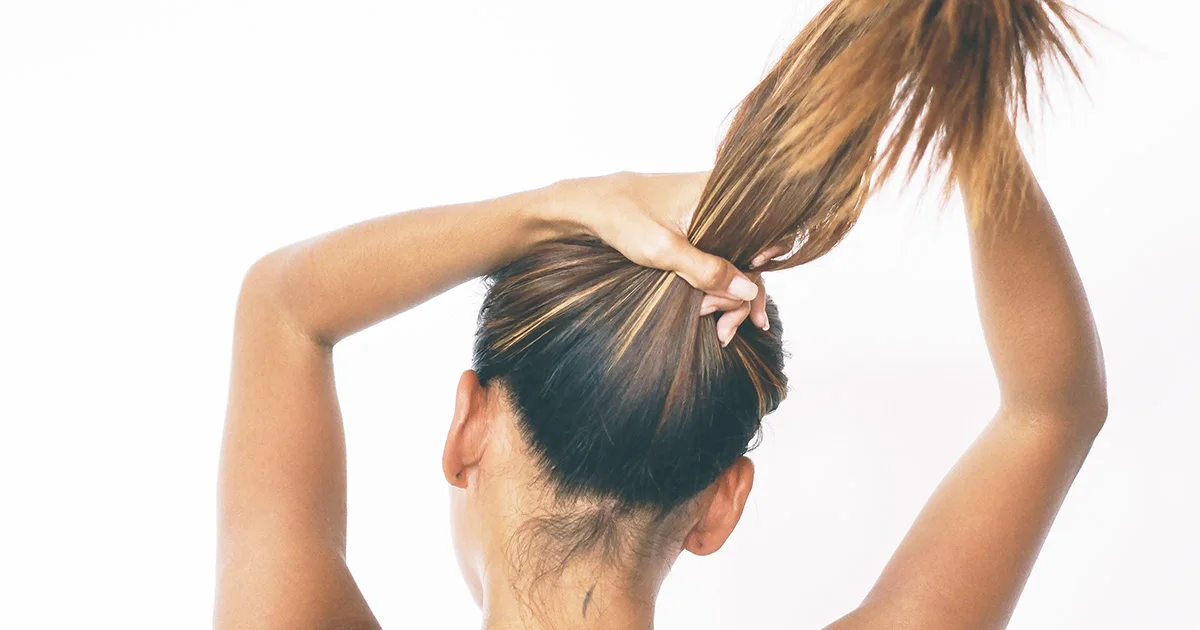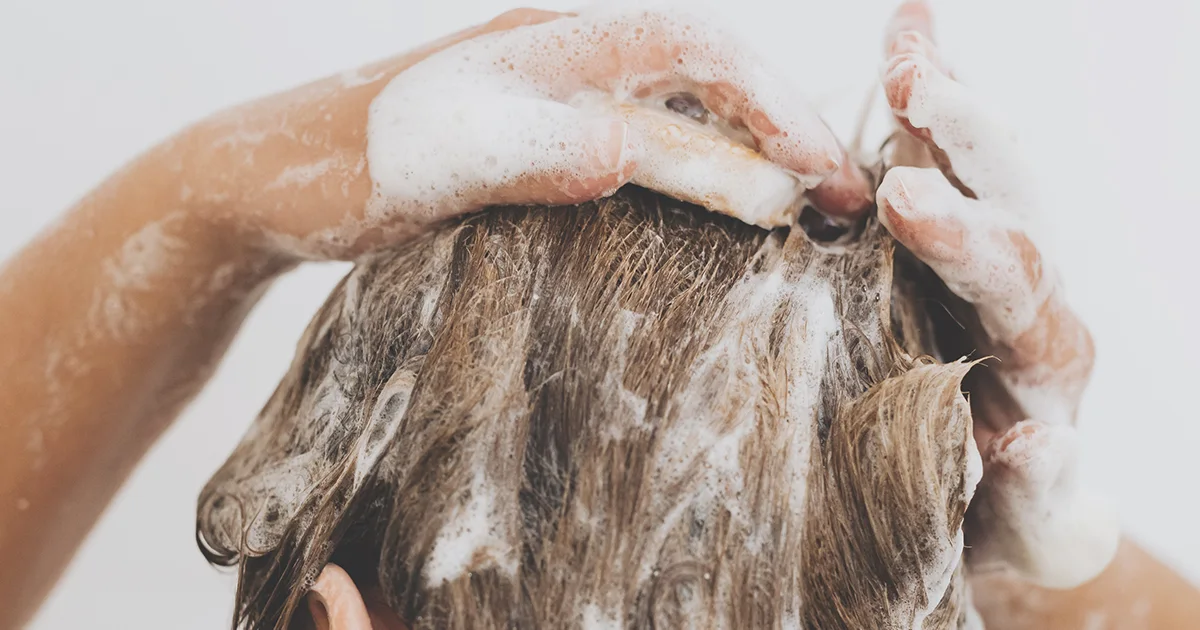Here's what we'll cover
Here's what we'll cover
Hair loss affects millions of people, but that doesn’t mean you have to just put up with it. If you notice thinning hair or a receding hairline, you may have male pattern baldness (MPB), also known as androgenic alopecia. The good news is there have never been more strategies you can try to stop balding and encourage your hair to grow back. Keep reading to learn more.
How to reverse hair loss: 6 strategies
It’s not always possible to reverse hair loss, but the sooner you take action, the more likely you’ll see good results. While not guaranteed, many people can stop or slow down hair loss—and in some cases, even regrow hair—using the science-backed solutions below.
1. Take finasteride
Finasteride (brand name Propecia) is a popular prescription pill to help treat baldness. It works by decreasing DHT (dihydrotestosterone), a hormone that affects hair follicles and contributes to hair loss (Salisbury, 2021).
Studies show that around 80% of men who take finasteride see an improvement in hair loss. It’s important to note that some people who take finasteride experience sexual side effects, like decreased sex drive or erectile dysfunction. Children and pregnant women should not use this drug (Manabe, 2018; Zito, 2022).
2. Use minoxidil
Minoxidil (brand name Rogaine) is an over-the-counter liquid or foam applied to the scalp twice a day. It encourages blood flow to the hair follicles to stimulate hair growth (Badri, 2021).
Minoxidil seems to work best on younger men (under 40) who’ve been experiencing hair loss for less than five years. It may not work as well once the hair loss has been present longer and has spread to include a larger area of the scalp (Badri, 2021).
Studies show that minoxidil and finasteride work better together for certain types of hair loss than using either one alone (Chen, 2020). Keep in mind that it’s necessary to keep using the medications to keep seeing results—once you stop, any new hair growth may reverse, and your male pattern hair loss will pick up where it left off.
3. Use an LLLT device
Holding a laser wand to your head to regrow hair might sound like science fiction, but actual scientists say it can work. Low-level laser therapy (LLLT) is an FDA-cleared way to treat hair loss. These devices, which emit a constant red LED light, come in the form of a wand you point at the scalp or a cap you can wear. Researchers theorize that LLLT may trigger the hair follicle stem cells to stimulate new hair growth (Egger, 2020).
Studies show that all three solutions above—minoxidil, finasteride, and LLLT—are better than placebo in regrowing hair. They’re all effective for promoting hair growth in men with male pattern hair loss (Adil, 2017).
4. Get enough vitamins and minerals
There are a lot of vitamin and nutritional supplements on the market that claim to regrow hair or make it thicker or shinier, but there’s little hard evidence that most vitamins and supplements can help with hair loss—with two notable exceptions (Almohanna, 2019).
If you are deficient in vitamin D or iron, dietary supplements may improve your thinning hair. This is especially true if you have specific types of hair loss, like male pattern baldness, alopecia areata (hair loss caused by the immune system attacking hair follicles), and telogen effluvium (temporary hair loss caused by shock, stress, or trauma) (Almohanna, 2019).
Vitamin D is naturally produced by the body when the skin is exposed to sunlight. We also get it in foods like milk and eggs. But many of us don’t get enough vitamin D. If you have thinning hair, you might want to get your vitamin D level checked by a healthcare provider.
Iron is a mineral that people get from their diets, especially from foods like red meat or spinach. Iron deficiency is also common—even more so in women. Being deficient in iron can make you anemic (when you have low blood cell counts). Your healthcare provider can also check your iron levels.
5. Try DHT-blocking shampoo
Several varieties of shampoo claim to block DHT’s effects on hair follicles. They do not work as well as minoxidil or finasteride, but some find them effective. Several of these shampoos contain ketoconazole (the active ingredient in the dandruff shampoo Nizoral). Researchers think that ketoconazole, combined with other hair loss treatments like finasteride, can disrupt DHT’s damaging effects on hair follicles (Fields, 2020).
6. Get PRP treatment
Also known as “platelet-rich plasma,” this procedure involves having blood drawn, then placed in a centrifuge to extract the plasma, which is then injected into the scalp. The theory is that the growth factors in platelets can spur hair growth. Studies show that PRP treatments can improve hair growth when used alone or combined with other hair loss treatments (Gupta, 2019).
Oral Minoxidil Important Safety Information: Read more about serious warnings and safety info.
Finasteride Important Safety Information: Read more about serious warnings and safety info.
How to prevent balding
Unfortunately, there is no way to fully avoid going bald. Family history (something you can’t change) is one of the most common causes of age-related hair loss and male-pattern baldness. However, taking care of your general health and sticking to a healthy hair care routine can help you avoid making your condition worse. And it can help to use the strategies above as early as possible when you start noticing your hair thinning.
Maintaining healthy hair care and styling habits can help prevent balding, including (Bloch, 2019):
Avoid using high heat on your hair (e.g., high heat hairdryers).
Don’t use hair products that contain harsh chemicals or bleach.
Don’t over-brush (your hair does not need 100 strokes a day).
Avoid high tension hairstyles (like tight braids or ponytails).
If these solutions don’t work for you, a dermatologist may be able to help you explore other options.
DISCLAIMER
If you have any medical questions or concerns, please talk to your healthcare provider. The articles on Health Guide are underpinned by peer-reviewed research and information drawn from medical societies and governmental agencies. However, they are not a substitute for professional medical advice, diagnosis, or treatment.
Adil, A. & Godwin, M. (2017). The effectiveness of treatments for androgenetic alopecia: A systematic review and meta-analysis. Journal of the American Academy of Dermatology , 77 (1), 136–141. doi: 10.1016/j.jaad.2017.02.054. Retrieved from https://www.ncbi.nlm.nih.gov/pubmed/28396101
Al Aboud, A. M. & Zito, P. M. (2021). Alopecia. StatPearls . Retrieved on Mar. 15, 2022 from https://www.ncbi.nlm.nih.gov/books/NBK538178/
Almohanna, H. M., Ahmed, A. A., Tsatalis, J. P., et al. (2019). The role of vitamins and minerals in hair loss: a review. Dermatology and Therapy , 9 (1), 51–70. doi:10.1007/s13555-018-0278-6. Retrieved from https://www.ncbi.nlm.nih.gov/pubmed/30547302
Badri, T., Nessel, T. A., & Kumar, D. D. (2021). Minoxidil. StatPearls . Retrieved on Mar. 15, 2022 from https://www.ncbi.nlm.nih.gov/books/NBK482378/
Bloch, L. D., Goshiyama, A. M., Dario, M. F., et al. (2019). Chemical and physical treatments damage Caucasian and Afro-ethnic hair fibre: analytical and image assays. Journal of the European Academy of Dermatology and Venereology: JEADV , 33 (11), 2158–2167. doi:10.1111/jdv.15761. Retrieved from https://pubmed.ncbi.nlm.nih.gov/31237371/
Chen, L., Zhang, J., Wang, L., et al. (2020). The efficacy and safety of finasteride combined with topical minoxidil for androgenetic alopecia: a systematic review and meta-analysis. Aesthetic Plastic Surgery , 44 (3), 962–970. doi:10.1007/s00266-020-01621-5. Retrieved from https://pubmed.ncbi.nlm.nih.gov/32166351/
Egger, A., Resnik, S. R., Aickara, D., et al. (2020). Examining the safety and efficacy of low-level laser therapy for male and female pattern hair loss: a review of the literature. Skin Appendage Disorders , 6 (5), 259–267. doi:10.1159/000509001. Retrieved from https://pubmed.ncbi.nlm.nih.gov/33088809/
Fields, J. R., Vonu, P. M., Monir, R. L., et al. (2020). Topical ketoconazole for the treatment of androgenetic alopecia: a systematic review. Dermatologic Therapy , 33 (1), e13202. doi:10.1111/dth.13202. Retrieved from https://pubmed.ncbi.nlm.nih.gov/31858672/
Gupta, A. K., Cole, J., Deutsch, D. P., et al. (2019). Platelet-rich plasma as a treatment for androgenetic alopecia. Dermatologic Surgery: Official Publication for American Society for Dermatologic Surgery , 45 (10), 1262–1273. doi:10.1097/DSS.0000000000001894. Retrieved from https://pubmed.ncbi.nlm.nih.gov/30882509/
Manabe, M., Tsuboi, R., Itami, S., et al., & Drafting Committee for the Guidelines for the Diagnosis and Treatment of Male- and Female-Pattern Hair Loss (2018). Guidelines for the diagnosis and treatment of male-pattern and female-pattern hair loss, 2017 version. The Journal of Dermatology , 45 (9), 1031–1043. doi:10.1111/1346-8138.14470. Retrieved from https://pubmed.ncbi.nlm.nih.gov/29863806/
Salisbury, B. H. & Tadi, P. (2021). 5 Alpha Reductase Inhibitors. StatPearls . Retrieved on Mar. 15, 2022 from https://www.ncbi.nlm.nih.gov/books/NBK555930/ .
Zito, P. M., Bistas, K. G., & Syed, K. (2022). Finasteride. StatPearls . Retrieved on Mar. 15, 2022 from https://www.ncbi.nlm.nih.gov/books/NBK513329










